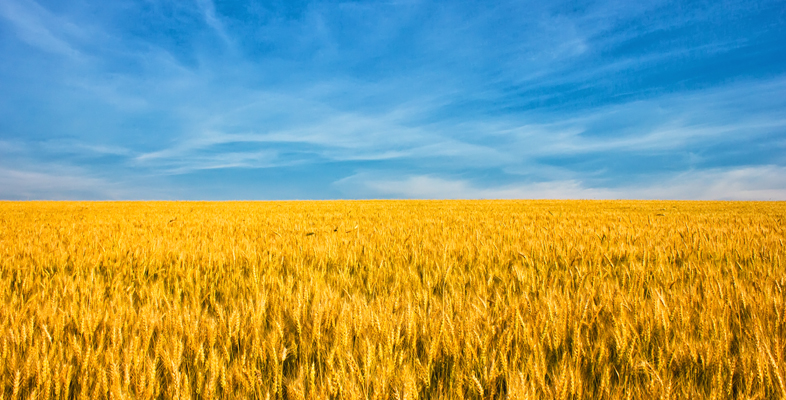5 How does it taste?
In this section, you learn words which describe taste and temperature. Listen to the recording and read the table below.
| Ukrainian | Transliteration | English translation |
|---|---|---|
| Смачний / несмачний | smachnyi / nesmachnyi | tasty / not tasty |
| солодкий | solodkyi | sweet |
| кислий | kyslyi | sour |
| солоний | solonyi | salty |
| гіркий | hirkyi | bitter |
| гострий | hostryi | hot (spicy) |
| гарячий | hariachyi | hot (temperature) |
| теплий | teplyi | warm |
| холодний | kholodnyi | cold |
Transcript: Audio 52
Nouns and adjectives part 1 (Audio 53 transcript)
You’ll also find the audio version of this explanation useful, for the pronunciation and to listen to when you are on the go!
Let’s start with nouns. Nouns are the names of people, places, things and ideas. We have mentioned before that all Ukrainian nouns have gender, even when there is nothing obviously masculine or feminine about them! It is just a way of sorting them into groups. Most nouns which finish on a consonant are masculine. Those ending on -a, -ia are usually feminine. Most nouns finishing on -o and -e are neuter.
Transcript: Audio 53
Activity 4: Select the correct information
Look at the endings of these nouns and select the gender of each one from the dropdown menu.
Using the following two lists, match each numbered item with the correct letter.
-
молоко moloko
-
вода voda
-
торт tort
a.feminine
b.masculine
c.neuter
- 1 = c
- 2 = a
- 3 = b
Answer
Masculine:
Торт tort – ends with a consonant.
Feminine:
вода voda – ends in -a.
Neuter:
молоко moloko – ends in -o.
Why are you looking at gender now? It is because the endings of adjectives depend upon the gender of nouns.
Listen to the phrases on the recording and read the table. Try to work out the gender endings of the adjectives.
Transcript: Audio 54
Solodkyi tort (sweet cake), kyskyi lymon (sour lemon), solonyi ohirok (‘salted cucumber’, or ‘gherkin’), solodka tsukerka (sweet sweet), kysle yabluko (sour apple), smachne pechyvo (tasty biscuit), hostra kovbasa (spicy sausage), hariacha kava (hot coffee), kholodna voda (cold water), teplyi chai (warm tea), hirkyi shokolad (bitter chocolate), kholodne moloko (cold milk).
| Ukrainian | Transliteration | English translation |
|---|---|---|
| Солодкий торт | solodkyi tort | sweet cake |
| кислий лимон | kyslyi lymon | sour lemon |
| солоний огірок | solonyi ohirok | salted cucumber, gherkin |
| солодка цукерка | solodka tsukerka | sweet sweet |
| кисле яблуко | kysle yabluko | sour apple |
| смачне печиво | smachne pechyvo | tasty biscuit |
| гостра ковбаса | hostra kovbasa | spicy sausage |
| гаряча кава | hariacha kava | hot coffee |
| холодна вода | kholodna voda | cold water |
| теплий чай | teplyi chai | warm tea |
| гіркий шоколад | hirkyi shokolad | bitter chocolate |
| холодне молоко | kholodne moloko | cold milk |
Nouns and adjectives part 2 (Audio 55 transcript)
I hope you have noticed difference in adjectives’ gender endings. So, let’s sum it up. You could see from the examples, that masculine ending is -yi: solodkyi tort, kyslyi lymon, solonyi ohirok, teplyi chai, hirkyi shokolad. So, let’s say these phrases together focusing on masculine form of these adjectives: solodkyi tort________, kyslyi lymon ____, solonyi ohirok______, teplyi chai ________, hirkyi shokolad _______.
Feminine forms of adjectives can be found in these examples: solodka tsukerka, hostra kovbasa, hariacha kava, kholodna voda. As you can see, the feminine adjectives’ ending is -a. Let’s say together the following phrases focusing on feminine adjectives: solodka tsukerka______, hostra kovbasa________, hariacha kava_______, kholodna voda_____.
And here are neuter gender examples: kysle yabluko, smachne pechyvo, kholodne moloko. I hope you have spotted the ending of neuter gender adjectives – -e. Let’s repeat these phrases together: kysle yabluko _____, smachne pechyvo______, kholodne moloko__________.
Well done if you managed to find the difference between gender endings of adjectives on your own!
Transcript: Audio 55: Explanation
Activity 5
Now select the correct form of the Ukrainian word for ‘tasty’ to go with each noun. Is it cмачний, cмачнa or cмачнe?
Using the following two lists, match each numbered item with the correct letter.
-
цукерка tsukerka
-
торт tort
-
яблуко yabluko
a.cмачнe smachne
b.cмачний smachnyi
c.cмачнa smachna
- 1 = c
- 2 = b
- 3 = a
Answer
Masculine: cмачний торт smachnyi tort
Feminine: cмачнa цукерка smachna tsukerka
Neuter:
cмачнe яблуко smachne yabluko
To finish this section, here is a summary of adjective endings, using cмачний smachnyi as an example.
| Masculine | Feminine | Neuter |
|---|---|---|
| cмачний торт smachnyi tort | cмачнa цукерка smachnatsukerka | cмачнe печиво smachne pechyvo |
